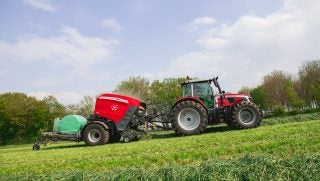Born enslaved in Sumter County, South Carolina, in 1853, George Washington Murray invented and patented agricultural machinery that accelerated planting and harvesting processes in the late 1800s. Murray is recognized in the class of 2024 National Inventors Hall of Fame among 14 other pioneers.
Murray lost both of his parents by the end of the Civil War in 1865. Though he hadn’t received a formal education, he attended the University of South Carolina in 1874 until the university expelled Black students in 1877.
After his expulsion, Murray worked as a teacher, purchased land, and became a successful farmer — all exceedingly rare among formerly enslaved people at the time. He’d begun farming as a teenager, and by 1880, he owned 49 acres of tilled farmland and 15 wooded acres, and he produced cotton, wood, corn, eggs, butter, and fruit.
In the early 1880s, Murray found inspiration for his inventions when he watched his wife use a sewing machine in their home. As she used different attachments to perform various tasks, he thought he might try equipping one of his farm machines with interchangeable attachments, making it possible for one machine to serve multiple functions at an affordable cost.
Murray earned eight patents for his agricultural machinery inventions in 1894. The patents described a machine with furrow-opening, stalk-knocking, planting, fertilizing, reaping, and distributing attachments. It could harvest small grains with the stalks still attached, gather them into sheaves or bundles, and distribute the sheaves in even intervals along the ground, where they could be collected easily.
Murray was elected to the U.S. House of Representatives on his second attempt and served as the only Black representative in the 53rd and 54th Congresses from 1893 until 1897.
Congressman Murray supported funding the Cotton States and International Exposition in Atlanta, which would include an exhibit celebrating the achievements of Black Americans. In a floor speech in August 1894, Murray, who saw patents as emblematic of equality and progress, championed the recognition of Black inventors and submitted a document from patent examiner Henry E. Baker to the Congressional Record. Known as “Baker’s List,” this document named 92 U.S. patents granted to Black inventors. Congress subsequently voted in favor of funding the exhibition.
After leaving Congress in 1897, Murray returned to his farm and invested in land. He moved to Chicago in 1905, maintaining his innovative spirit by selling life insurance and real estate, writing books, and working as a professional lecturer. While serving as treasurer of a Chicago department store, Murray received his ninth and final patent for a portable hoisting device designed for use in stores and warehouses.
»Related: Minn. brothers recognized nationally for skid-steer invention


